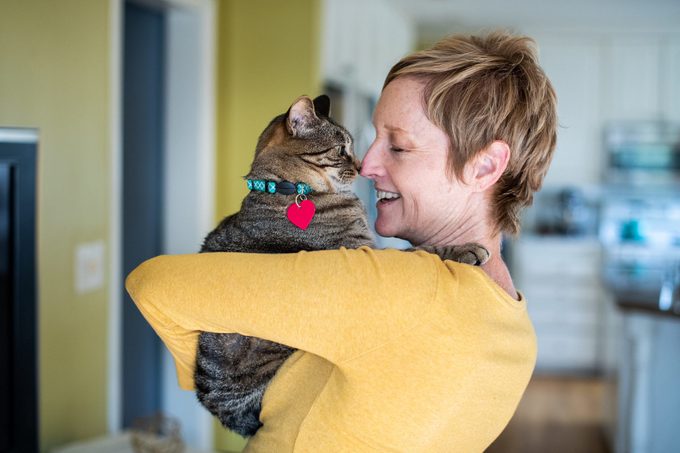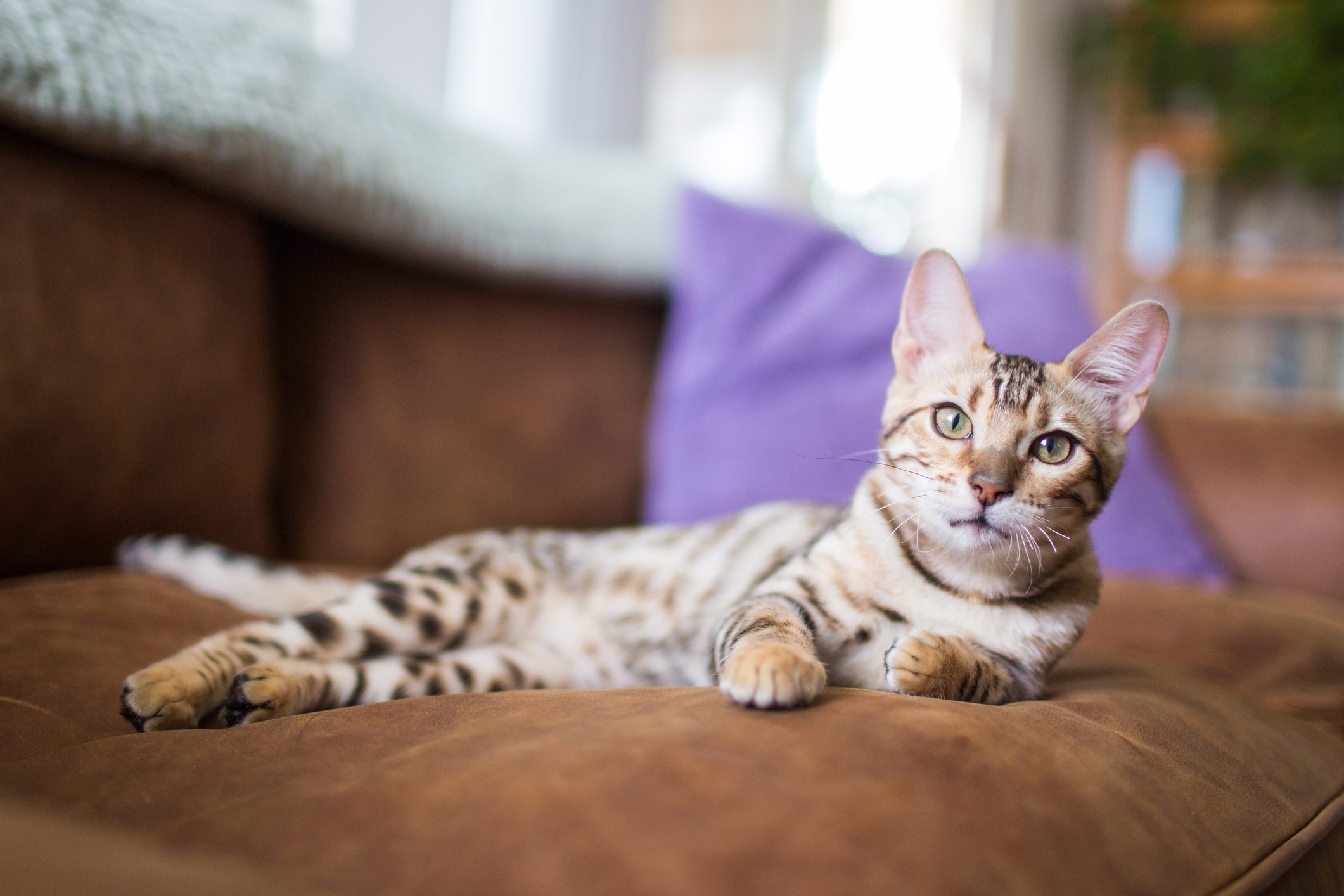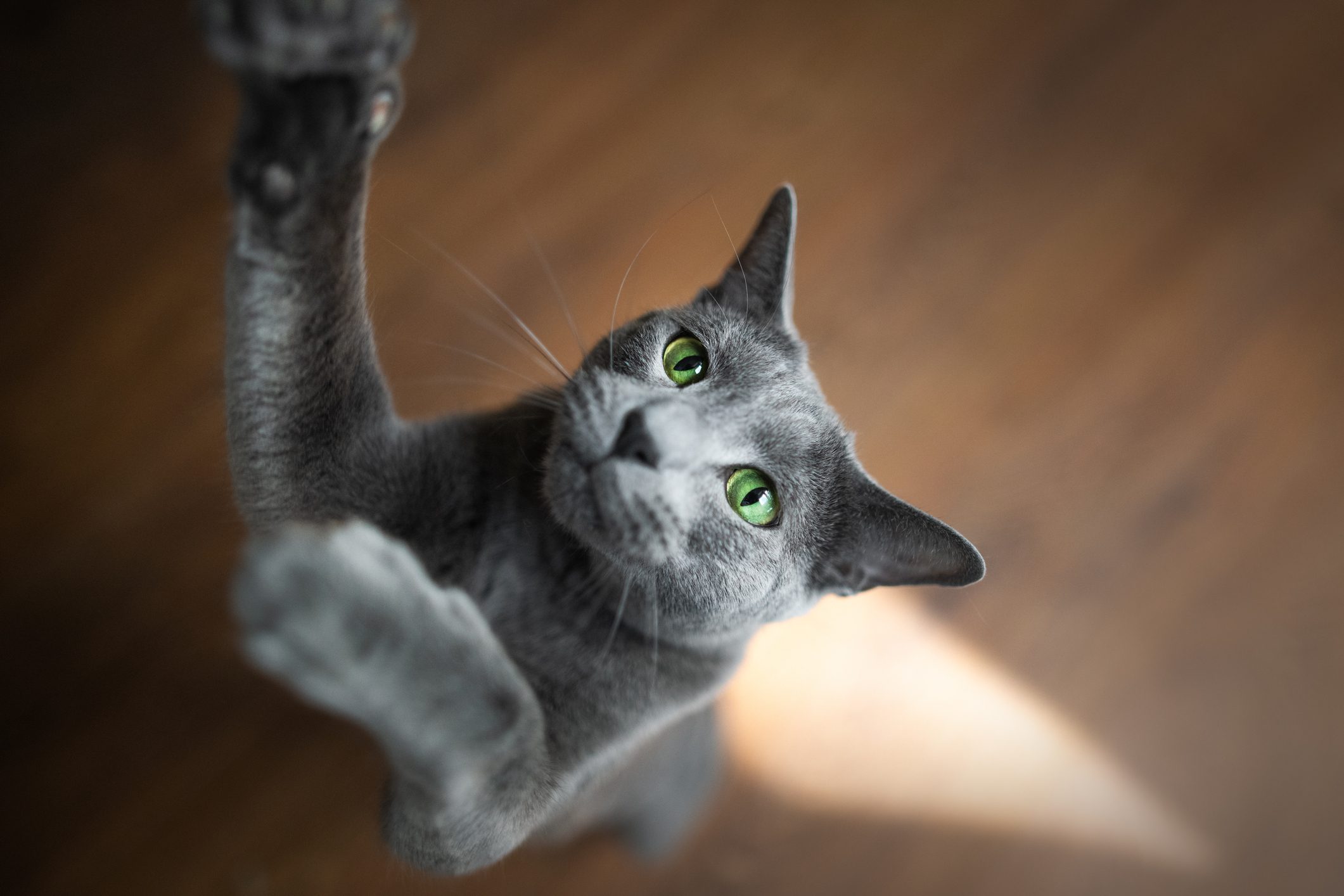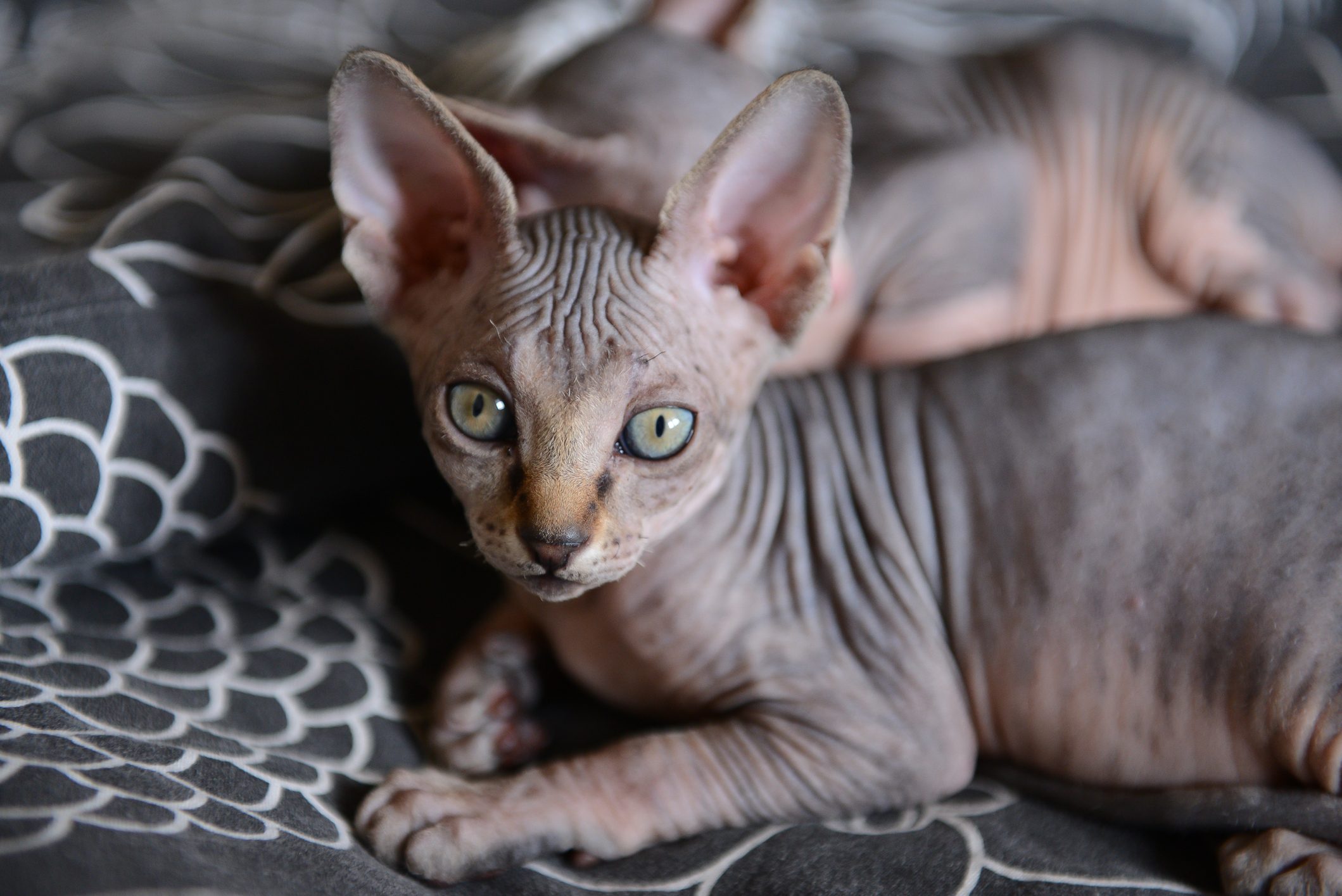If you love cats but can’t stop sneezing when you’re around them, don’t despair! These hypoallergenic cats may be the answer.

8 Hypoallergenic Cats for People with Allergies

It’s believed that more people are allergic to cats than to any other animal in the world. In fact, an estimated one in five people worldwide experiences cat allergy symptoms, according to the Human Animal Bond Research Institute. Even if you have a cat allergy, though, there are hypoallergenic cats that won’t trigger red eyes, itchy skin or a stuffy nose. To find out what they are, we talked to Kelly St. Denis, DVM, a veterinarian and practicing feline medicine specialist, about the best breeds to accommodate a cat allergy.
If you’re thinking about adopting a cute kitten but worry about allergic reactions among the humans in your household, these breeds come highly recommended. Read on to learn the expert recommendations for hypoallergenic cats—then enjoy some top-quality cat cuddles, sans sneezing!
Get Reader’s Digest’s Read Up newsletter for more pets tips, humor, cleaning, travel, tech and fun facts all week long.
What causes allergies to cats?
A common cat myth is that if you have a cat allergy, it’s likely because of a cat’s fur, which is actually false. Studies tell us that fur is often irrelevant and that some of the most hypoallergenic cats actually have lush, long hair. In reality, when people develop allergy symptoms around felines, they are reacting to a protein called Fel d 1, which is present in cats’ skin, saliva and urine.
When a cat licks its fur, the saliva containing the Fel d 1 dries into lightweight particles that are carried through the air. Eventually, they land on human hair, clothing and furniture, and they can linger for weeks or months, says Dr. St. Denis.
The amount of Fel d 1 varies widely among cats, and even within cats at different times of year. “There are not really cats that are 100% hypoallergenic,” Dr. St. Denis explains. “There are some breeds that are thought to produce less of the allergen. Some of the other breeds just shed less hair or dander. So cats might have reduced allergen because they make less or they shed less of their coat into the environment.”
Typically, female cats produce less of the protein than male cats, and neutered males produce less than those who haven’t been fixed.
Balinese
This elegant, expensive-looking cat breed was named after the graceful dancers of Bali but actually originated in the United States after a spontaneous genetic variant of Siamese cats resulted in kittens with long hair. Unlike most long-haired cats with two or three layers of fur, Balinese cats have only one coat of their lush, silky mane, so it usually doesn’t mat or tangle.
What’s more, they are believed to produce less Fel d 1 than most other breeds. They tend to be vocal, alert and affectionate, as well as extremely intelligent. (By the way, the closely related Javanese cat also seems to trigger less of an allergic response.)
Bengal

With its leopard-like markings, the Bengal is a gorgeous house cat with exotic flair that charms people with its intelligence and playfulness (and good looks, obviously). The Bengal originated in the United States when a researcher crossed domestic cats with hybrids—the hybrids themselves being the result of breeding African leopard cats with domestic cats.
A medium to large cat breed, the Bengal has soft, dense fur that is noted for its extraordinary rabbit-like softness and its limited shedding. In addition, Dr. St. Denis says that while most cats spend up to 25% of their time grooming themselves, Bengals tend to engage in this activity less often, so they spread less of the allergen around.
Colorpoint Shorthair
This is considered a “human-made” cat breed because it was developed by crossing a Siamese with a red tabby American Shorthair in the mid-1900s. Like the Siamese, its body is a light color, but the “points” on its ears, face, tails and paws can come in any of 16 different colors. This breed sheds very little, and for that reason, it is often recommended as a good pet for people with cat allergies.
It is also considered one of the most affectionate cat breeds. Like the Siamese, it’s very vocal, intelligent and playful. A related breed, the Oriental Shorthair—a cross between a Siamese, an American Shorthair and an Abyssinian—also tends to produce less of an allergic response.
Cornish Rex
Like the Balinese, the Cornish Rex is the result of a genetic mutation, and it is still considered a rare cat breed. In this case, a kitten with short, curly hair was born among a litter of British Shorthairs. The kitten was then mated strategically to create the new breed. Now, it’s hailed as a great choice for cat lovers with allergies because its single coat of soft down hair doesn’t shed as much as some other cats’ fur.
Still, the Cornish Rex does develop oil buildup on its skin and therefore requires frequent bathing. This cat’s egg-shaped head, giant ears and long legs give it a distinctive, almost aloof appearance. Get to know a Cornish Rex, though, and you’ll find it’s a playful, intelligent and outgoing companion. Its cousin, the Devon Rex, is another good choice for people with cat allergies.
Russian Blue

Believed to have originated in the northern hinterlands of Russia, this cat exudes grace and beauty with its muscled body, brilliant green eyes and triangular head. Its short, bluish coat, tipped with silver, rarely sheds; what’s more, the double coat is believed to trap allergens closer to the cat’s skin, preventing them from becoming airborne in the environment.
The Russian Blue is also thought to produce less Fel d 1 than other breeds, Dr. St. Denis says, though no conclusive studies have been done. For all these reasons, the Russian Blue is considered one of the top hypoallergenic cat breeds. The Russian Blue is also intelligent and loves to play—it will even play “fetch”—and is sweet and affectionate with its humans.
Siberian
Despite its triple coat of dense fur that ranges from medium to long, the Siberian cat seems to produce less Fel d 1 than most other breeds, making it the closest thing to a truly hypoallergenic cat breed, according to a Smithsonian Magazine interview with cat geneticist Leslie Lyons. This fluffy cat, originating in the forests of Russia, has been around since at least the year 1000, though it didn’t arrive in the United States until 1990. Siberians are intelligent, athletic and generally quiet though affectionate, and they love to play in water.
Siamese
With deep blue eyes, a long tapered tail, regal stature and a short sleek coat, the Siamese cat reminds us of its origins in the temples of Thailand. Its coat is typically a shade of cream, while its face, ears, paws and tail are usually a darker color, ranging from lilac to deep brown. The Siamese cat is known for being extremely vocal, mischievous and intelligent, and it tends to shed less than other cats. If you adopt one, keep a close eye on it—Siamese cats are among the breeds that are stolen most often.
Sphynx

Often thought of as hairless, the Sphynx actually has a fine, fuzzy layer of what is sometimes called “peach fuzz” in humans. It may also have short hair on the nose, ears and tail. Because a Sphynx has little to no hair to shed, the Fel d 1 allergen’s distribution in your home is limited. This cat is just as cuddly as other breeds, and some liken its skin to suede or chamois. The Sphynx is a loyal kitty companion and will delight its humans with acrobatic stunts … when it’s not relaxing in a warm, sunny spot by the window, that is.
About the expert
|
Why trust us
At Reader’s Digest, we’re committed to producing high-quality content by writers with expertise and experience in their field in consultation with relevant, qualified experts. We rely on reputable primary sources, including government and professional organizations and academic institutions as well as our writers’ personal experiences where appropriate. We verify all facts and data, back them with credible sourcing and revisit them over time to ensure they remain accurate and up to date. Read more about our team, our contributors and our editorial policies.
Sources:
- Human Animal Bond Research Institute: “Understanding the Impact of Cat Allergens on the Human-Animal Bond”
- Kelly St. Denis, DVM, veterinarian and practicing feline medicine specialist
- Smithsonian Magazine: “There’s No Such Thing as a Hypoallergenic Cat”
- WebMD: “Cat Allergies”
- European Journal of Allergy and Clinical Immunology: “Keep the cat, change the care pathway: A transformational approach to managing Fel d 1, the major cat allergen”
- Journal of Allergy and Clinical Immunology: “Sex difference in Fel d 1 allergen production”





















